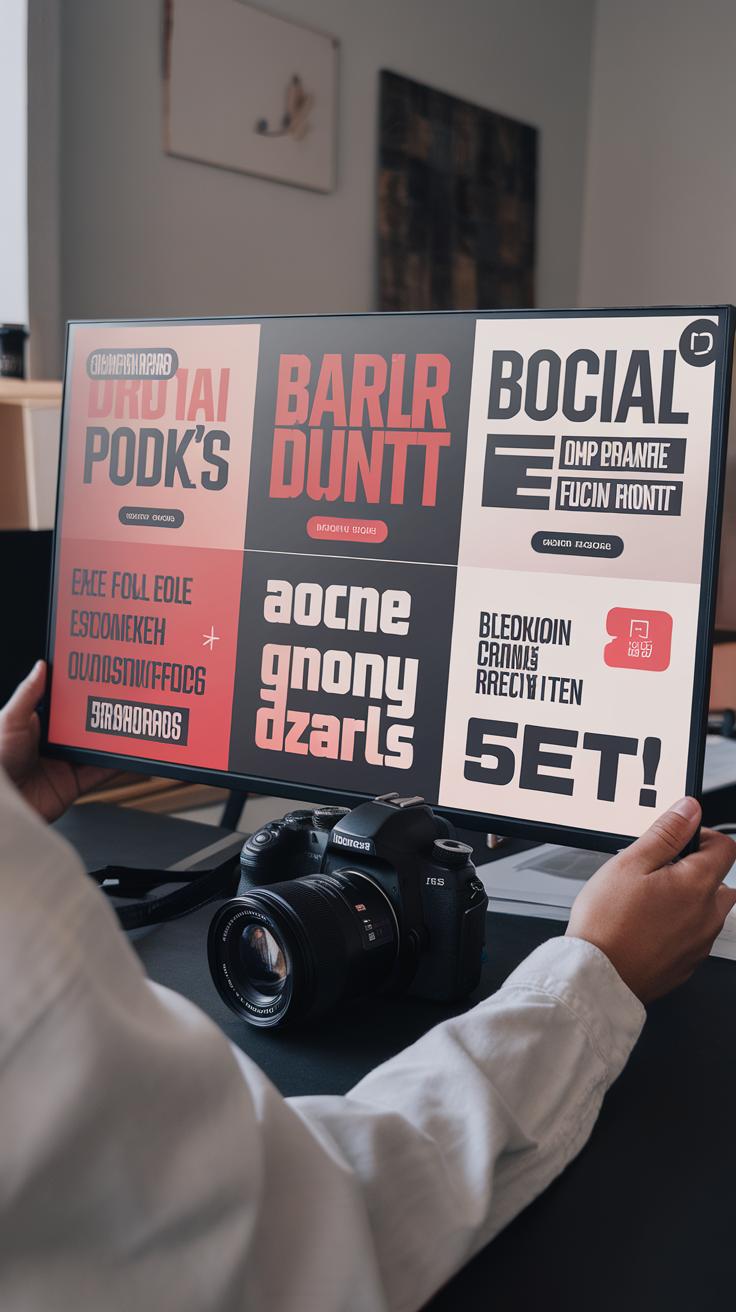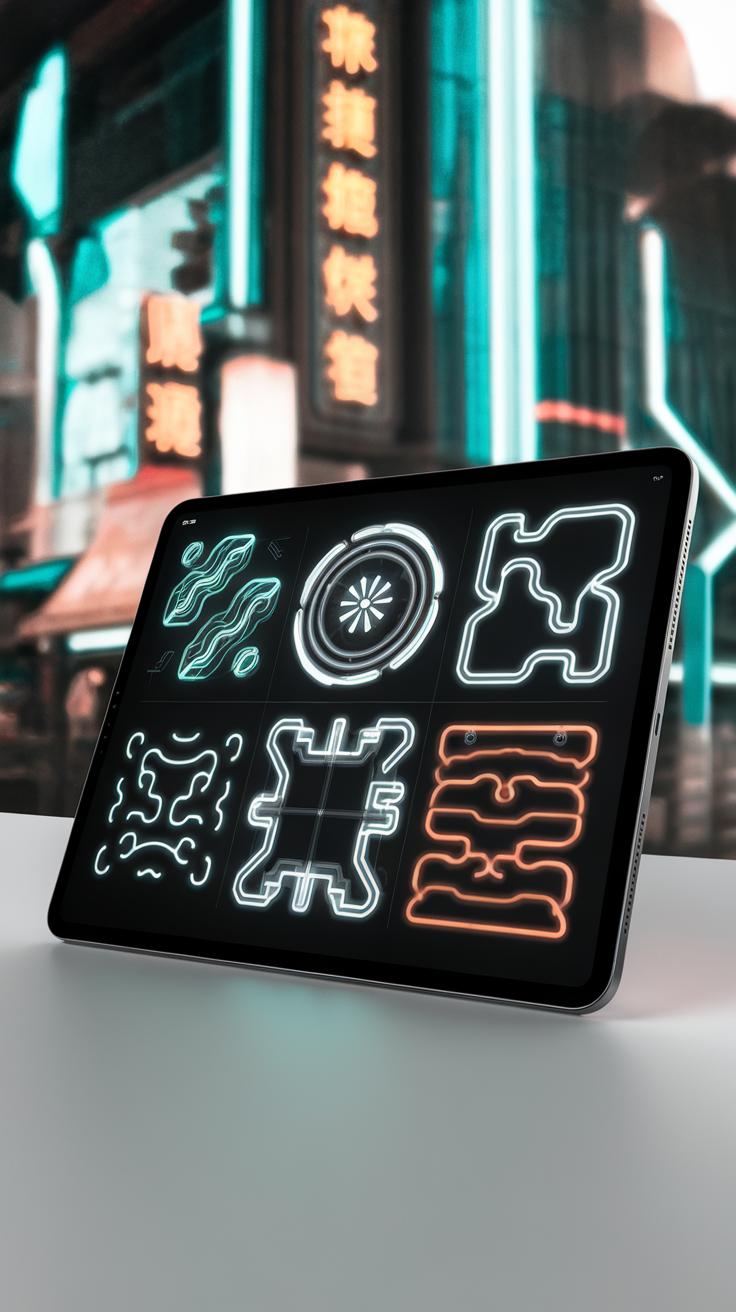Introduction
Social media post design plays a crucial role in capturing attention and enhancing engagement. From the choice of imagery to the use of colors, every element contributes to how effectively a message is conveyed. Understanding the nuances of effective design can significantly impact a brand’s online presence and audience interaction.
We will explore the importance of visual hierarchy, typography, color psychology, and other design principles that can elevate your social media content. Whether you are a seasoned designer or a business owner looking to improve your brand’s visibility, these tips will provide valuable insights into making your posts more compelling.
Understanding the Importance of Social Media Post Design
Why Social Media Post Design is Critical for Engagement
In a landscape dominated by fleeting attention spans, the design of social media posts plays a vital role in capturing user interest and fostering engagement. Attractive visuals can act as the primary hook for users scrolling through their feeds. A well-designed post doesn’t just draw attention; it communicates messages more effectively than text alone. Research supports the notion that people are more likely to remember information presented visually compared to text-based formats. This phenomenon is largely due to the brain’s propensity for processing images substantially quicker than words.
The Impact of Visuals on User Perception
Visual elements inherently influence user perception and emotional response. A post featuring high-quality images or graphics can evoke feelings of professionalism and trustworthiness, while poorly designed content may create doubt or disengagement. This immediate judgment is often subconscious, setting the tone for how users feel about a brand or message. When users associate appealing visuals with a brand, they are more likely to engage, share, and convert, driving not just interactions but also reinforcing brand loyalty.
Consistency in design elements—such as colors, fonts, and styles—can further solidify user recognition and trust. A cohesive aesthetic across all social media platforms can help establish a recognizable brand identity, making posts easily identifiable at a glance. Additionally, incorporating brand-specific imagery or logos can increase information retention as users become familiar with visual cues linked to the brand.
Visuals play a significant role in increasing the potential for information retention. Studies indicate that users are 65% more likely to remember information when it is paired with relevant visuals. This means that effective social media post design should not be overlooked; strategic visual planning can significantly enhance the overall message and elevate engagement metrics.
The design of social media posts is not merely an aesthetic choice, but a strategic necessity. It shapes user interaction and perception, ultimately influencing the effectiveness of marketing campaigns. By investing in eye-catching and meaningful designs, brands can enhance their social media engagement and establish a lasting digital presence.
Elements of Effective Graphic Design for Enhanced Social Media Engagement
Key Components That Drive Engagement
Creating social media posts that captivate audiences involves a careful blend of graphic design elements. The layout, color scheme, and typography are foundational components that significantly impact user engagement and response. Understanding how these elements work together can elevate a simple post into an engaging visual experience.
The layout serves as the backbone of any graphic design. An effective layout guides the viewer’s eye, ensuring that the most important information and visuals are prioritized. A clear hierarchy within the design helps users navigate through content effortlessly. Utilizing grids or balanced asymmetry can result in a polished look. Posts that are cluttered or lack structural clarity often confuse viewers, leading to decreased engagement. A well-organized layout not only improves readability but also enhances the overall aesthetic appeal of the post.
Color is another powerful element that influences emotional responses and engagement. Each color elicits specific feelings and reactions; for instance, blue often conveys trust and calmness, while red can evoke excitement and urgency. When designing social media posts, selecting a harmonious color palette that aligns with the brand’s identity is vital. Complementary colors can create visual interest and draw attention to key elements. It’s essential to consider cultural perceptions of color as they can vary widely across different audiences. Moreover, color contrast ensures visibility, making text and images stand out against backgrounds.
Typography also plays a significant role in graphic design. The choice of font, its size, and arrangement can greatly affect readability and overall engagement levels. Fonts should reflect the brand’s personality—whether modern, classic, or playful. It’s beneficial to opt for a limited number of font styles to maintain cohesiveness. Consistency in font usage across posts builds brand recognition while strategic size variations can highlight important information or calls to action. Clarity is paramount; overly intricate fonts may confuse readers or detract from the message, leading to disengagement.
Combining these elements thoughtfully results in social media posts that not only stand out but also foster a deeper connection with the audience. An effective graphic design isn’t just about aesthetics—it’s a strategic tool for communication and engagement in a crowded digital environment.
Utilizing Typography to Capture Attention
Typography is a pivotal component of social media post design, profoundly influencing how content is perceived and engaged with. The choice of typeface, its size, and arrangement plays a vital role in crafting messages that resonate with audiences. When designed thoughtfully, typography can amplify the post’s purpose and message, ensuring it stands out amid the relentless scroll of social feeds.
The Significance of Font Choice
The typeface selected for a post carries significant weight. Fonts evoke emotions and convey personality. For instance, a bold, sans-serif font might express modernity and strength, appealing to a youthful demographic, while a script font could suggest elegance and charm, attracting a more sophisticated audience. It’s essential to align font choice with brand identity and the nature of the message being conveyed.
Clarity is paramount. A font that looks stunning may not be effective if it sacrifices readability. It’s advisable to choose typefaces that are easy to read at a glance, especially when considering that social media users often skim through content. A well-chosen font can make a post not only aesthetically pleasing but also accessible.
Impact of Size and Arrangement on Readability
The size of the text is equally critical. Larger fonts can grab attention quickly but may appear overwhelming if overly used. Conversely, smaller fonts can be elegant but might deter viewers if they require too much effort to read. Striking a balance is vital—using larger text for headlines to capture initial interest and smaller text for supplementary information can create a harmonious flow in the post design.
Text arrangement impacts how information is consumed. Utilizing line spacing, kerning, and alignment can affect readability and overall visual appeal. A well-structured layout that guides the audience’s eye through the content facilitates better comprehension and keeps viewers engaged longer. Employing contrast between text and background ensures that messages pop out, further enhancing attention.
Incorporating these typography elements thoughtfully can significantly elevate a social media post’s effectiveness. By optimizing font choice, size, and arrangement, designers create a captivating narrative that resonates and connects with their target audience, setting the stage for deeper engagement and interaction.
Imagery and Visual Storytelling Enhancing Engagement Through Captivating Designs
The Role of Imagery in Social Media Design
Imagery plays a pivotal role in social media design, acting as a conduit for storytelling and emotional resonance. In a realm where attention spans are fleeting, a striking image can halt a scroll, prompting viewers to engage with content. This engagement goes beyond mere likes and shares; it fosters a deeper emotional connection with the audience. A well-selected image not only supports the message being conveyed but also evokes feelings that align with the brand’s narrative.
Images in social media posts should serve as the visual embodiment of your brand’s voice and identity. They can evoke nostalgia, happiness, or curiosity, all of which are essential in building a connection. The emotional depth of imagery can turn a simple post into a memorable experience, encouraging viewers to interact in a meaningful way.
Best Practices for Selecting Images
Choosing the right images requires intentionality and an understanding of your target audience. Here are some best practices to consider:
- Relevance: Ensure that the images you select align with your brand message and the emotions you aim to evoke. For instance, using serene landscapes for a wellness brand promotes calmness and relaxation.
- Quality: High-resolution images are a must. Blurry or pixelated pictures can detract from your message and hurt your professional image.
- Authenticity: Use images that reflect real people and situations, particularly those that resonate with your audience’s experiences. Authentic imagery tends to foster relatability and trust.
- Color Schemes: Align the imagery with your brand’s color palette. A harmonious color scheme reinforces brand recognition and creates a cohesive look across posts.
- Context: Images should provide context to the post’s content. If your message is about community engagement, show images of people interacting at a local event or volunteering.
By following these best practices, you can enhance the storytelling aspect of your social media visuals, creating a narrative that captivates your audience. In the evolving landscape of social media, a strategic approach to imagery will not only improve engagement but also strengthen the emotional connection with your followers, thereby deepening brand loyalty.
Consistency in Branding Across Social Media
Building Recognition Through Visual Design
Establishing brand consistency across social media platforms is paramount for enhancing recognition and trust. When visual design elements such as color schemes, typography, and logos remain uniform, they create a cohesive identity that audiences can easily associate with your brand. This harmonized appearance strengthens the likelihood that consumers will remember your brand amidst the vast array of content they encounter daily.
One of the best practices for achieving brand consistency is to develop a robust brand guideline document. This guide should outline specific colors, fonts, image styles, and logo usage to be implemented across all posts. By adhering to these guidelines, brands can maintain their unique identity, which fosters greater recognition and loyalty among followers. A defined palette and typeface not only help create visually appealing posts but also resonate with the emotional tone of your brand.
When it comes to social media, cross-platform compatibility is essential. Whether your audience engages with your content on Facebook, Instagram, Twitter, or LinkedIn, maintaining visual consistency ensures that your brand is instantly recognizable, regardless of the medium. This familiarity breeds trust; consumers are more likely to engage with brands they perceive as stable and consistent. As a result, your posts are not just random images or texts but integral parts of a larger narrative, enhancing audience connection and interaction.
Fostering Trust and Engagement Through Uniformity
Incorporating brand elements into your social media posts does more than just make them visually appealing; it also tells a story of trustworthiness and dependability. When users consistently see your branding in a recognizable format, they develop a sense of comfort with your brand. This trust is particularly crucial in today’s highly competitive marketplace, where consumers often have numerous options to choose from.
Have a consistent posting schedule that aligns with your brand’s identity. This not only helps improve recognition but also keeps your audience engaged. By anticipating your posts, followers are more likely to interact with your content, further solidifying your brand’s place in their minds. To amplify this effect, periodically evaluate performance metrics to ensure that your design choices resonate with audiences and adapt as necessary while maintaining core branding principles. Such strategic practices ensure your brand remains relevant and conversational.
Analyzing Engagement and Performance Measuring Impact of Social Media Post Design
Understanding Metrics for Effective Design Choices
By tracking performance indicators such as likes, shares, comments, and click-through rates, brands can gauge how effectively their visual content resonates with the audience. This analysis is not merely a numerical exercise; it offers invaluable insights into audience preferences and behaviors. For instance, posts adorned with bright colors and compelling typography may yield higher engagement rates compared to those with subdued tones and clichéd designs. Thus, evaluating these metrics becomes essential for continuous improvement.
Engagement metrics serve as a compass, guiding brands toward more effective visual communication strategies. By segmenting posts based on performance, brands can identify which design elements—such as imagery, color schemes, or fonts—drive interaction. For example, if a particular style of infographic garners significant shares, it can be adopted in future posts to amplify reach. Such patterns highlight the impact of design decisions on overall audience engagement, presenting a clear argument for their meticulous analysis.
The Connection Between Design, Engagement, and Audience Sentiment
While quantitative metrics provide a foundation for evaluation, qualitative analysis adds depth to understanding audience sentiment. This involves assessing comments and user-generated content in response to posts. Creatively crafted designs that elicit emotional responses often lead to deeper connections and higher engagement. A vibrant image accompanied by a heartfelt story or a striking call-to-action can evoke feelings that resonate with viewers, prompting them to interact more fervently.
A/B testing can be instrumental in gathering comparative data about different design approaches. By presenting two variations of a similar post to segments of the audience, brands can analyze which design resonates more effectively. This strategy not only allows for real-time adjustments but also informs future design choices based on direct feedback from the target audience. Consistently using this data to inform design decisions helps cultivate a visually appealing brand presence that not only attracts attention but also fosters trust and loyalty.
The importance of measuring engagement metrics cannot be overstated. As the landscape of social media becomes increasingly competitive, understanding how design choices impact audience interaction will be vital for brands looking to maintain relevance. By leveraging these insights, brands are empowered to refine their visual strategies, ensuring that their posts captivate and connect with the audience in meaningful ways.
Future Trends in Social Media Post Design Speculating on Upcoming Design Aesthetics and Their Engagement Potential
Anticipated Innovations in Social Media Aesthetics
As we look toward the future, it is essential to consider how emerging design trends in social media will reshape engagement strategies. One clear trajectory is the increasing integration of augmented reality (AR) into social media posts. Users anticipate immersive experiences that allow them to interact with content in real-time. Brands that adopt AR elements, such as filters and interactive games, can create more engaging posts that not only draw attention but also encourage active participation. This trend aligns with the growing consumer desire for experiences over mere consumption, suggesting that posts rich in AR content may lead to higher engagement rates.
Another likely shift involves the utilization of more personalized and customized design elements. As algorithms evolve, platforms will enable better targeting of posts based on individual user preferences and behaviors. This shift will push brands to create tailored graphics and stories that resonate more deeply with their audiences. The incorporation of user-generated content into post designs is also expected to soar, as it promotes authenticity. Audiences often engage more with relatable content, which can further enhance community building and brand loyalty.
Visual Styles and Design Elements on the Horizon
In terms of aesthetics, minimalism will continue to reign, but with a twist—expect to see bold typography and vibrant color palettes that capture immediate attention. Combining minimalist designs with striking visuals can create a powerful balance that appeals to both modern sensibilities and traditional visual storytelling. Furthermore, the use of motion graphics is anticipated to become commonplace, allowing static images to come to life and communicate messages more effectively. Videos, GIFs, and animated overlays can enhance storytelling capabilities, thus increasing the likelihood of shares and interactions.
Sustainability in design may emerge as a significant trend. Eco-conscious consumers appreciate brands that align with their values, including the ethical consideration of design choices. This can manifest in the use of organic textures, earth-toned colors, and messaging focused on sustainability, helping brands cultivate a greener image.
Understanding and anticipating these trends can empower brands and marketers to create visually appealing, engaging posts that resonate deeply with their target audiences. The evolution of social media post design not only reflects the changing tastes of consumers but also signals a shift towards more interactive, meaningful connections with brands.
Conclusions
The power of effective social media post design cannot be underestimated. Well-designed posts can communicate brand messages effectively, create lasting impressions, and foster genuine engagement with followers. By implementing the tips discussed, such as understanding your audience, utilizing strong imagery, and maintaining consistency in your branding, you can significantly enhance your social media strategy.
As the landscape of social media continues to evolve, staying updated with design trends and audience preferences will ensure your posts remain relevant and engaging. Therefore, prioritize thoughtful design in your social media approach, and watch as your engagement metrics soar, ultimately leading to stronger connections with your audience and greater success in your marketing efforts.
















